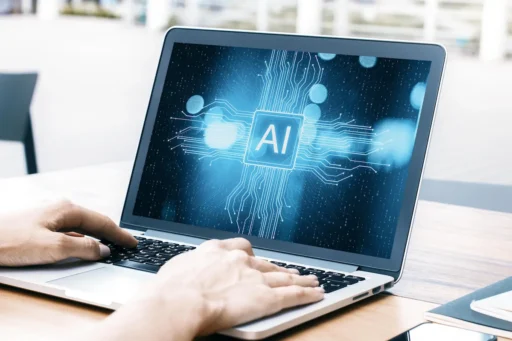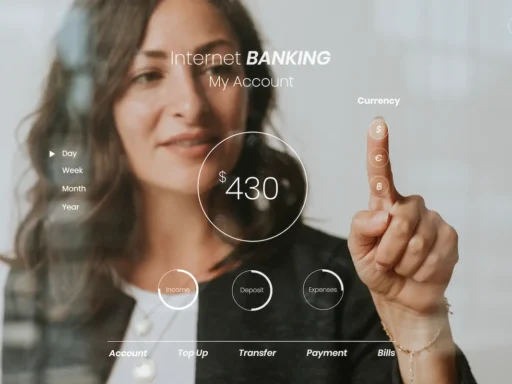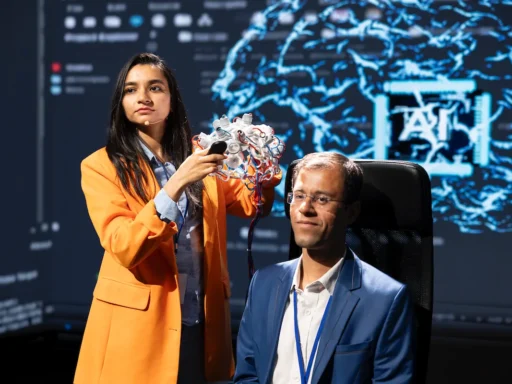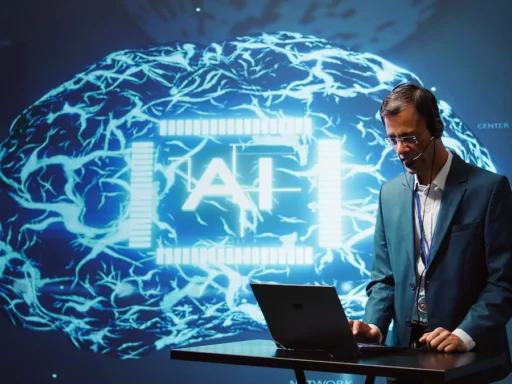When people say they “don’t trust AI,” they’re usually not talking about robots taking their jobs—they’re talking about black boxes. They’re talking about tools making high-stakes decisions—hiring, healthcare, credit scoring—without showing any receipts. If you don’t know how something works, how can you trust it? That’s the friction facing developers, regulators, and just about anyone interacting with new AI tools—and it’s finally starting to get addressed.
At the center of this shift is OpenAI. The company, once guarded with its model secrets, is pulling back the veil—sort of. With intense competition from community-powered open models like DeepSeek-R1, growing regulatory heat from the EU AI Act, and 80 million users demanding transparency, OpenAI’s recent decision to release an open-source model is less about goodwill and more about survival.
Yes, it’s partial. No, it’s not a kumbaya moment. But it’s a step—and a significant one—toward answering a basic question every AI user has been asking: “Can I truly understand what this model is doing?”
The Case For Transparency In AI Development
Trust doesn’t come from sleek product demos or promotional tweets. It comes from clarity. And right now, users, developers, governments—they’re all sick of being kept in the dark.
Here’s what’s happening behind the scenes:
- Regulators in the EU, US, and Asia are drawing hard lines around high-risk AI use cases, demanding model traceability, provenance records, and more.
- Developers can’t fine-tune or safely integrate tools if they don’t know how a model reasons, what biases are baked in, or how decisions are shaped.
- Public outcry? Already happening. From biased resume-filters to misfiring facial recognition systems—opaque AI leads to real-world harm.
Transparency isn’t a feature anymore. It’s the baseline. When you expose how an AI model operates—its goals, its logic patterns, even its weak spots—you’re not just making it easier to debug; you’re making it easier to trust.
A transparent model means:
– Users can audit decisions.
– Researchers can spot bias patterns.
– Regulators can hold companies accountable.
And that trust? It becomes a competitive edge.
OpenAI’s Journey Toward Transparency
This didn’t happen overnight. OpenAI’s early flagship models—GPT-2, GPT-3—were locked behind closed doors. Source code? No. Model weights? Nope. Not even training data transparency. Back then, the rationale was risk: “It’s too dangerous to open.”
But then came DeepSeek-R1 and Meta’s Llama series—open models that rivaled OpenAI’s performance. They were cheaper. They were shareable. And they gave developers freedom.
Pressure kicked in.
In February 2025, OpenAI responded by embedding partial transparency into its o3-mini model. They didn’t go fully open-source, but they added:
• Multilingual support for global reach
• Post-processing filters to auto-remove toxic or biased content
• “Reasoning trace” features that let users view how the model made decisions
It wasn’t open-source—but it was a crack in the armor.
Then came the announcement: OpenAI will release its own open-source model.
Not a toy version. A real open-source launch with usable parameters. That means:
| Feature | OpenAI’s Commitment |
|---|---|
| Code Availability | Full repository access for developers |
| Weight Sharing | Public release of model weights for reproducibility |
| Reasoning Traceability | Built-in logs of decision-making paths |
Introducing OpenAI’s Open-Source Model
This open-source release isn’t just charity—it’s strategy.
With EU laws tightening, developers jumping ship to less restrictive alternatives, and the public growing weary of corporate secrecy, OpenAI made a calculated move. Publish a transparent model. Let the crowd in. Share the guts, not just the outputs.
It’s a hybrid play:
– Protect their flagship product (GPT-4o)
– Open up a second-tier model built for collaboration and experimentation
This model brings:
• Auditability: Developers can trace step-by-step how outputs are formed
• Safety integration: Automated filters against toxic or unsafe flows
• Regional adaptability: More language and cultural context baked into responses
It’s a foundation, not a finished product. OpenAI isn’t handing over the keys to AGI. But they’re giving builders the toolkit—and signaling to the world that closed-loop AI is a dying breed.
The battleground now? Who can build trust faster: the gatekeepers or the community?
Open-Source AI and Collaborative Research
Want to build AI that understands your dialect, solves your city’s transit problems, or supports your local hospital on a shoestring budget? Without open-source models, those ideas would stay in notebooks. That’s why open-source AI isn’t just about transparency—it’s the fuel of innovation for communities most locked out of Big Tech’s gated walled gardens.
Strengthening the AI Research Community
Open-source AI creates an electrical circuit of global minds. Developers build on each other’s work, modifying models for new applications. A tool trained for legal document search in English becomes the backbone of a low-cost legal chatbot in Swahili. That’s the wild beauty of community collaboration.
Projects like Hugging Face’s Transformers or Stability AI’s diffusion models prove how fast, reliable updates thrive when code is open. Localized sentiment analyzers, real-time weather pattern detectors, and even dyslexia readers for underserved languages have emerged from forks of shared model weights.
DeepSeek-R1 rolled out full model accessibility, undercutting OpenAI’s GPT-4o API costs by 85%. Overnight, entire regions previously priced out of large-scale language model work could innovate independently. Models like Meta’s Llama 3.1 and open alternatives from Shanghai LLM labs quickly caught up, not because they had secret sauce—but because the kitchen was open to begin with.
Encouraging Public Contributions
Every GitHub commit isn’t just code—it’s a critique, an improvement, a value judgment. The open-source AI community catches misaligned behaviors faster than internal QA ever could. Think: one dev in Argentina fine-tuning a model for medical triage in rural clinics; another in Malaysia slashing inference time to get more results per micro-watt.
- Bias testing libraries born from women-led research labs in Nairobi
- Low-rank adaptation techniques shared by grad students to reduce compute needs
- Pre-training datasets flagged for toxic content by Reddit-sourced contributors
These examples show why when tech elites lock up models, what they’re really withholding is collective problem-solving. Thousands of developers spot edge cases, patch hallucinations, streamline pipelines—all before the next corporate all-hands meeting wraps.
Ensuring Accessibility in AI Development
Leveling the AI field isn’t theoretical. In Dakar, one team used open model weights to spin up Wolof voice assistants on refurbished servers powered by solar panels. In the Philippines, students repurposed public chatbots to handle typhoon triage coordination, built on modified open models.
Without access to commercial licenses—or the cloud credits cozy startups get handed in Silicon Valley—many regions are left out of the so-called AI wave. But open-source systems help:
- Train local translators and software engineers using real, state-of-the-art code
- Create community-focused tools without waiting on policy shifts or VC capital
- Preserve language diversity in natural language processing models
The gap isn’t just technical. It’s cultural and infrastructural. Open models make it possible for affinity groups—indigenous communities, disability advocates, youth programmers—to shape how AI shows up in their lives.
Risks of Open-Source AI and OpenAI’s Mitigation Plan
None of this is utopian. Open models can be twisted. Face cloning, phishing generators, targeted misinformation bots—they’re real threats. That’s why OpenAI pulls back, keeping weights closed under its IP comfort blanket. Their middle-ground? o3-mini’s partial traceability: you can audit decisions, but not rerun the entire system under your own governance—or distill it into a clone.
To keep open collaboration alive without escalating misuse, OpenAI’s aligning with initiatives like the Open-Source AI Foundation. Their approach hinges on:
- Mandatory post-processing safety layers
- Multilingual monitoring for toxic outputs and slang-coded bias
- Selective sharing: training data never released, but model behavior audited
Here’s the rub: selective transparency mirrors the Llama 3.1 playbook—release model weights, skip the data. It’s strategic obscurity masked as openness. Public trust hinges on knowing not just what a model does—but how it was built and who paid the price along the labor pipeline.
Transparency and Ethical Sharing in AI
Can you trust tools you can’t see into? In fields like healthcare, education, and justice, open development isn’t a luxury—it’s the firewall. If lives are shaped by AI decisions, societies need visibility. Simple as that.
Code Transparency as a Catalyst for Trust
Transparency doesn’t mean revealing all. It means revealing enough so that harm can’t hide. Open-source models give audit trails. Developers analyze outputs, replicate results, surface bugs. Stakeholders—governments, NGOs, the press—can cross-examine what’s under the hood.
OpenAI’s o3-mini toes this line carefully. Source code remains proprietary. But logic traces—how a model reached a given output—are now open to inspection. That’s a small win for sectors like law, healthcare, and public services, where explainability beats speed every time.
Why not go fully open then? According to OpenAI’s filings with the EU AI Office, full transparency risks model manipulation and knowledge property theft. But critics argue that protecting models like they’re crown jewels ignores the power imbalance. What’s more dangerous—misuse by small actors, or under-the-radar errors by trillion-dollar platforms?
Model Auditing for Ethical Use
Even semi-open models can’t function ethically without scrutability. Public audits ensure consistent logic, fairness checks, and comparative benchmarking. Think of model cards like machine CVs—what they were trained on, what they struggle with, how they adapt under pressure.
OpenAI’s involvement in the Open-Source AI Foundation signals a shift. Joint efforts are establishing:
- Third-party audits of AI behavior across industries
- Supply-chain-level disclosures of training data proxies
- Standardized protocols for red-teaming and safety challenges
Enterprises, especially in sensitive environments like credit scoring and medical predictions, gain from auditing tools. It’s compliance, yes—but also clarity. Fairness guarantees. Shadow-bias tracking. And ultimately, better products for actual humans, not just enterprise dashboards.
AI Governance and OpenAI’s Example
As AI laws emerge—starting with the EU AI Act mandating transparency in “high-risk” systems—OpenAI’s hybrid strategy is slowly aligning with global trends. The Open-Source AI Foundation isn’t just a talk shop. It shaped key protocols absorbed into the Act’s transparency clauses.
By contributing to these early (and still shaky) norms, OpenAI is attempting to lead without bleeding IP. But the clock is ticking. Global south governments, transparency watchdogs, and civil society advocates are demanding not just code—but fairness, reproducibility, and accountability.
Transparency isn’t a philosophy. It’s a survival mechanism for trust in systems replacing teachers, judges, and doctors. OpenAI has dipped a toe in this pool. Whether they dive deeper or stay shallow will determine who carries AI’s credibility forward—VCs or communities.
A New Era of Democratized AI
What if building world-class AI didn’t require billions in funding or a PhD from Stanford? That’s exactly what open-source AI is unlocking—and it’s shifting power away from Big Tech and into the hands of everyday builders. Tired of asking how to compete with OpenAI or Google? The better question now is: how fast can you pick up a pre-trained model and start building?
Open-source AI models, like DeepSeek-R1 and Meta’s Llama 3.1, are turning the old rules upside down. Instead of being locked into expensive APIs or waiting for some corporate roadmap to drip-feed features, developers can now get under the hood, tweak the engine, and ship. Localized models, custom safety filters, and ultra-specific applications? You can do all that from your kitchen table—if you have access.
Take Molmo, one of the fast-growing startups no one saw coming. With barely any compute budget and open weights from DeepSeek-R1, they fine-tuned a 72B model on just 1/1000 of the data used to train GPT-4o—and nailed benchmarks most closed models still struggle with. They’re not unique. Across healthcare, climate tracking, and language preservation, small teams are standing shoulder-to-shoulder with giants.
It’s not just about leveling the playing field. It’s about changing the game. More hands in the mix means more languages supported, more underserved use cases solved, and fewer gatekeepers deciding who gets access to “intelligence.”
Open models fuel this shift, but it’s the global community behind them that keeps the fire alive. Coders in Jakarta collaborate with AI researchers in Nairobi. Students in Brazil contribute to alignment experiments born in Berlin. Talent flows across zip codes, borders, and time zones—because the tools are public, and the mission is shared.
Want to learn prompt engineering in Rwanda? Pull public datasets. Need architecture blueprints in Bolivia? Join Hugging Face spaces. The infrastructure is there—the only thing needed now is people willing to build.
Academic institutions have started catching on. Waterloo, TU Munich, and Nanyang Tech are partnering with nonprofits to embed open AI literacy programs into their STEM curriculums. Think of it as the GitHub effect but in machine learning: when everyone has access, innovation stops being privilege-based and starts becoming contribution-based.
And here’s the ripple effect: when more people build the model, fewer companies get to hide behind “trade secrets.” Decentralized development exposes bias faster, forces transparency earlier, and ultimately drives AI that actually fits the diverse world it’s meant to serve.
Navigating Challenges and Building Toward the Future
But there’s a catch. When anyone can fork a powerful model, the same openness that empowers builders can also empower misuse. We’re talking deepfakes, exploit scripts, spam bots that break basic information hygiene. It’s the classic dual-use dilemma, only now it’s viral-speed with multi-modal capabilities.
So what’s the trade-off? Do you bottle up the best tech to avoid bad actors—or do you release it for the world and manage the risks downstream? The truth’s messier than either extreme.
Solutions are forming. Forget blanket access—many open-source devs now implement tiered release systems:
- Unoptimized versions for public inspection and academic use
- Optimized, high-performance releases gated by user contracts and ethical use attestations
Cybersecurity frameworks need to grow alongside this. Think baked-in watermarking, traceable API call logs, and auto-expiring share links. The tooling exists—it just hasn’t been enforced across the board yet.
But regulation won’t cut it alone. What’s missing is the accountability triangle—the three legs: open development, governance, and public feedback. They all need to stand strong for the thing to hold up.
Most conversations stop at company pledges or government rulings. But what about participatory design? Stuff like GitHub pull requests on model architecture, real-time alignment voting, or public bug bounties for ethical flaws—those tools exist in open-source software. It’s time to bring them to AI.
Governments have started taking baby steps. The EU AI Act includes transparency mandates for high-risk systems. In the US, piecemeal bills are floating through Congress. But nothing yet connects the dots between local labor impact, code transparency, and enforcement teeth.
That’s where people come in. Any individual can:
- Join a transparency index audit with local researchers
- Submit a flawed model output to forums tracking bias in foundational models
- Contribute documentation or prompt safety tests on huggingface.co
We can’t just wait on OpenAI or Meta to do the right thing. Creating accessible and equitable AI starts with community pressure and ends with collective authorship.
Despite the heat, OpenAI is still carving a middle road. The o3-mini’s release with detailed reasoning traces and explanation maps? That wasn’t out of the blue. DeepSeek-R1’s fully open release cracked the dam wide open.
But intentions alone don’t build access. Application does. Picture this: in rural India, teachers fine-tune language comprehension tools using Llama weights and local dialect data. In refugee camps, NGOs use AI models to generate nutrition plans and legal recourse guides. In clinics across underserved regions, models assist with diagnostics—running on $100 devices.
That’s the payoff: when open AI gets into the hands of those who need it most—not just those who can afford the API credits.
So here’s the call: OpenAI’s halfway transparency won’t cut it long-term. If we want a truly equitable AI future, we have to push—and contribute—ourselves. Host a model mirror. Join a model audit. Build your own guardrails. Because waiting for full ethical compliance from trillion-dollar companies is like waiting for oil tycoons to sell bikes.
The future isn’t about models versus people. It’s about whether people get to shape the models they live with.

